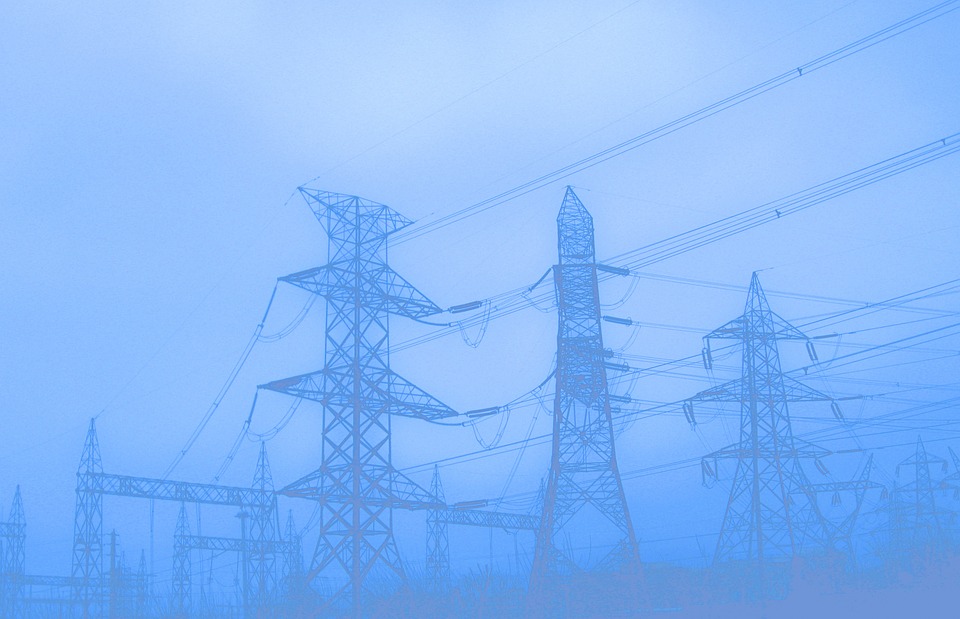
Bachelor of Engineering with (Honours) in Electrical/electronics Engineering aims to give the students an introductory working knowledge of modern electric power systems and the key issues in the operation of these systems. The programme concentrates on the development of a clear understanding of the philosophy of modern power system operation, and the systems used for large-scale generation, transmission and distribution of electric power. Upon completion of this programme, students will be able to analyse, model, and predict the performance of systems and devices including single-phase and three-phase systems, transformers, transmission and distribution networks that make up an electric power system. Past and current practices, as well as trends in the operation of modern power systems will be covered. New requirements imposed by deregulation, open access, and market competition are discussed.
Second Year
Differentiation
Integration
Applications of integration
Applications of differentiation
Functions of more than one real variables
Ordinary Differential equations
Series: Convergence, Divergence, Power series, Maclaurins, Taylor.
Matrices: Rank of a matrix, solution of system of equation by Gauss, eigen value and eigen vectors, quadratic form
Vectors in three dimensions: Scalar and vector triple product, application from mechanics.
Boolean algebra: Number systems and codes
Programming: Basic I/O, Basic Data types, Sequence, selection and iteration, Use of control graph. Introduction to procedural programming, Use of call graph,. Implementation of simple algorithms, Elementary code inspection and testing. Fundamental quality attributes of code, Introduction to professional programming conventions and protocols, Implementation using abstract structures, referential data types. Use of file I/O. Implementation of few complex algorithms/ data structures. Introduction to OOP paradigm: Class, object, association, inheritance, polymorphism. Programming in C++ or Java JDK, and MATLAB. Implementation of generic data structures in OOP (stack, linked list e.t.c). Use of objects in ADT. Testing of OO code. Quality attributes of OO code
Mechanical Engineering Workshop (10 weeks, Term II)
Civil and Surveying workshop technology (10 weeks, Term III)
SURVEY OF PROPERTIES OF MATERIAL
BOND THEORY
PHASE DIAGRAMS
IRON AND STEEL PRODUCTION
HEAT TREATMENT OF STEEL
NON FERROUS METALS
ENVIROMENTAL EFFECTS
SELECTION OF MATERIALS
UNIT A1.2 USING AVERAGE AND R.M.S VALUES
UNIT A1.3 APPLYING KIRCHHOFF’S LAWS
UNIT A1.4 ANALYSING NETWORK THEOREMS
UNIT A1.5 ANALYSING SIMPLE DC NETWORKS
UNIT A1.6 APPLYING ELECTROMAGNETIC PRINCIPLES AND MAGNETISM
UNIT A1.7 APPLYING ELECTROSTATIC PRINCIPLES AND ELECTROSTATICS
UNIT A1.8 ANALYSING STEADY STATE RESPONSE OF SIMPLE RLC NETWORKS TO SINUSOIDAL EXCITATION
UNIT A1.9 APPLYING POWER IN AC.CIRCUITS
UNIT A1.10 APPLYING RESONANCE IN SERIES AND PARALLEL RLC CIRCUITS
UNIT A1.12 USING THREE PHASE SYSTEMS (I.E DELTA/STAR CONNECTIONS)
UNIT B1.1 USING SEMICONDUCTOR THEORY
UNIT B2.1 APPLYING JUNCTION DIODES, BIPOLAR JUNCTIONTRANSISTORS AND UNIPOLAR TRANSISTORS (FET’s)
UNIT B3.1 USING AMPLIFIERS
UNIT B4.1 IDENTIFYING SPECIAL SOLID – STATE DEVICES
UNIT B5.1 USING FILTERS
PROJECTION METHODS
DIMENSIONING
SECTIONAL VIEWS
ASSEMBLY DRAWING
ENGINEERING GRAPHICS
INTRODUCTION TO CAD
2.0 STATICS OF BODIES
3.0 FLUID STATICS
4.0 KINEMATICS OF PARTICLE
5.0 FLUID DYNAMICS
Third Year
Fourier series
Fourier Transforms
Multiple Integration
Vector Algebra
Vector calculus
Partial Differential equations
Functions of complex variables: mappings, analytical functions, complex integration
2.0 Digital Electronic Signals and Switches
3.0 Basic Logic Gates
4.0 Programmable Logic Devices: CPLDs and FPGAs with VHDL Design
5.0 Boolean Algebra and Reduction Techniques
6.0 Arithmetic Operations and Circuits
7.0 Code converters
8.0 Logic Families
9.0 Memory Elements: Flip-Flops and Registers
10.0 Practical Considerations for Digital Designs
11.0 Counter Circuits and State Machines
12.0 Shift Registers
13.0 Multivibrators and the 555 Timer
14.0 Digital Analogue Interface
15.0 Memory
16.0 The 8051 Microcontroller
Introduction to Electrical machines
Magnetism and Magnetic Circuits
3.0 Electromechanical Energy Conversion
4.0 Direct Current Machines
5.0 Single-Phase Transformers
6.0 Induction Machines
7.0 Synchronous Machines
8.0 Industrial Motor Control
Fourth Year
2.0 Z – transformation
3.0 Statistics
GENERATION
ECONOMICS OF POWER GENERATION
PER UNIT SYSTEM REPRESENTATION
TRANSMISSION LINES
POWER QUALITY IN ELECTRICAL POWER SYSTEMS
SYMMETRICAL FAULTS CALCULATIONS
ELECTROSTATIC FIELDS
MAGNETOSTATIC FIELDS
INTRODUCTION TO GUIDED WAVES
3.0 Induction Machines
4.0 Synchronous Machines
5.0 Permanent Magnet Machines
6.0 Reluctance Machines
Functions of the Major Components with Particular Emphasis on the Intel 8085
The general architecture of a microprocessor and programming
Input/output operations and devices
I/O operation i.e. memory map
Addressing modes
Interrupt control
Interfacing types e.g. series and parallel
Programming procedures
State-variable models
System Responses
Control System Characteristics
Stability Analysis
Development and use of the Design Process in production of a design solution to a novel engineering design problem.
Problem solving techniques.
Development and use of applicable analytical techniques used in proving a design solution.
Production of 3-D models and assemblies in support of a design solution.
Research and investigation into design possibilities, component or system availability and incorporation into a design, justification for a design configuration, innovation or adaptation.
Writing a design report containing an explanation and justification of the design
Fifth Year
AC – DC CONVERTERS (NON- CONTROLLED)
AC – DC CONVERTERS (NON- CONTROLLED)
AC to AC CONVERTERS
DC-DC CONVERTERS(CHOPPERS)
COMPONENT TEMPERATURE CONTROL AND HEAT SINKS
UNSYMMETRICAL FAULT ANALYSIS:
POWER FLOW ANALYSIS:
OVERVOLTAGES AND INSULATION COORDINATION:
HIGH VOLTAGE DC TRANSMISSION:
TRANSIENT STABILITY
MOTOR HEATING, COOLING & RATING:
ROTATING M/C WINDINGS:
ELECTRICAL DRIVE SYSTEMS
AC DRIVE SYSTEMS.
Planning
Organising
Leading
Controlling
Managerial systems
Industrial and operations management
Marketing
TQM
TPM
JIT
Engineering Economics
Financial accounting and management
Investigation into an engineering problem or phenomenon
Research and analysis into relevant previous work on the problem or phenomenon being investigated.
Use of appropriate analysis techniques.
Use of appropriate design techniques (if required) and the production of appropriate designs (where necessary).
Production of hardware (where appropriate or necessary).
Testing and the production and interpretation of results.
Production of a project report that includes conclusions and recommendations.
Personal Development Planning (PDP).
Report writing.
2.0 System Earthing
3.0 Switch Gear
4.0 Fuses
5.0 Relay Technology
6.0 Current Transformers
7.0 Voltage Transformers
8.0 Overcurrent Protection
9.0 Differential Protection
10.0 Distance Protection
11.0 Auto reclosing
12.0 Transmission Line Protection
13.0 Transformer Protection
14.0 Busbar Protection
15.0 AC Motor Protection
